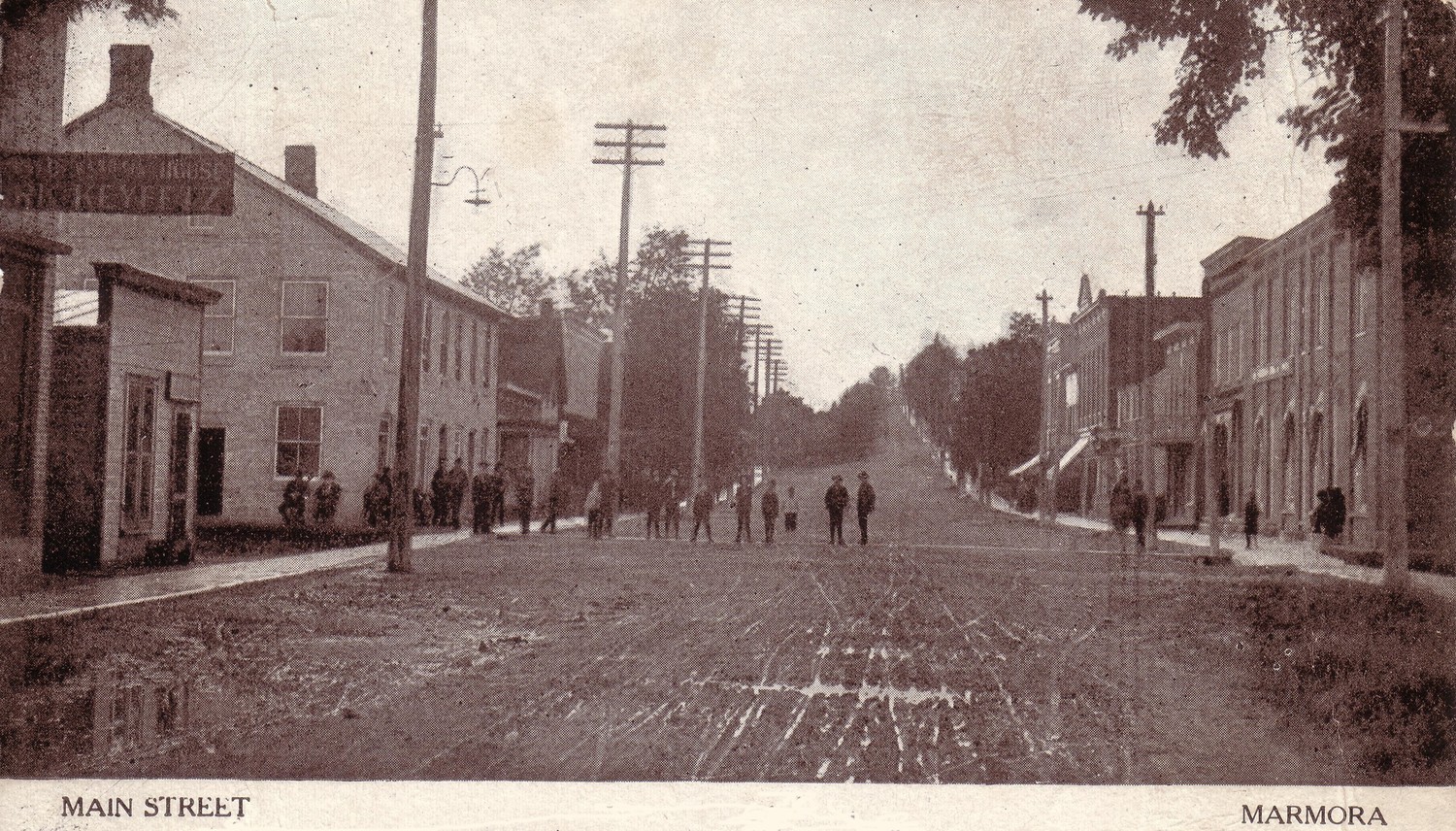Here's to the River Gangs!
/A story by Margaret Monk, written in 1967
During the river driving days, three companies drove their logs with the same gang of men all on the one drive, with the logs being sorted out just below the iron bridge on Beaver Creek, (recently replaced) about a mile north of the village. This was done according to markings: (Rathburn marked with a "star"; Gilmore with a "G". and Pearce, a "P").
The lumbering industry at that time covered only pine, hemlock, spruce and cedar, as hardwood lumbering did not come into being until later. Hardwood could not be included in the river drive because it would sink, and therefore, portable saw mills were used.
Lumbering was a full year's employment with men going to the bush in October to cut logs, skid them, draw to river or lake. Then as soon as the waters opened, the same men would drive logs to the mills then go into the. mill to help saw them.
The last cook of the Pearce river drive that can be recalled was Bill Rose, father of the late Mrs. Myrtle Jones and Mrs. George Kerr. Walking boss was Jacques Wilkes, father of Mrs. Garth Sabine.
Other mills were operated by William Bonter and Sons, owned originally by the family of the late Louis Briggs and continuing to operate until 1925; and Lynch and Ryan who began operations in 1907 and carried on for 20 years in the northern part of the township and the Coy Mill in Shannick.
The Thomas P. Pearce Co.
1911 Dam building by Cordova Co & Pearce Co..
The Coy Mill in Shannick: Left to Right - Bob Warren, Bruce Johnston, Jack Coy, Buck Warren, Leo Provost Sr., Bob Provost, Stan Brooks?, Gary Warren, Tony, Vic Provost, Bob Nobes, Tom Johnston, Vic Brooks, Harold Nobes, Peter Lucas
Remains of Bonter Saw Mill





































































